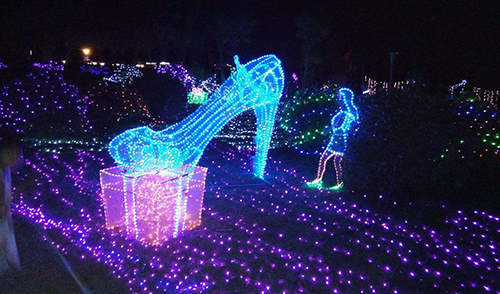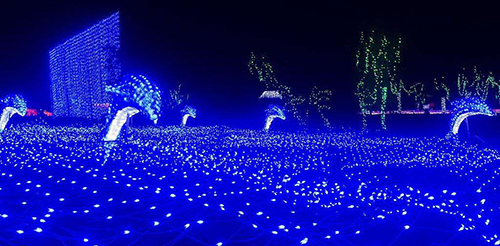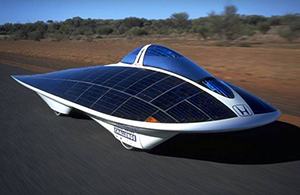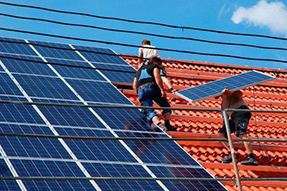What is Structure and Characteristic for Light Emitting Diode (LED) ?
There are many categories for LED lighting fixture, such as LED illumination light, LED lamp belt, LED strip, LED inground light, LED flood light and LED garden light, etc.
1. The Structure and Lighting Principle of LED
It was in 50 years ago that human being had learnt the basic knowledge that semiconductor materials can produce lighting beam, the first commercial semiconductor was produced in 1960. LED is the abbreviation of light emitting diode, its basic structure is a semiconductor which can be driven to bright by electricity, it is built on the skeleton which has lead wire, and its surrounding is sealed by epoxy resin, to protect its inner core cables, so, LED has good performance for anti-shock.

The Structure of LED is as below description.
The core component of LED is the chip which comprises of P type and N type semiconductor, there is a transition layer between P type and N type semiconductor, it is named as P-N junction. In the P-N junction of some semiconductor materials, when the pouring minority carriers and majority carries combine together, it would release the surplus power as lighting, thereby to convert electric power into luminous energy. If giving reverse voltage to P-N junction, the minority carries is difficult to pour, so, it doesn’t bright. When giving positive voltage to its two sides of terminal, the current would transmit from the positive pole to negative pole of LED, the semiconductor materials would have the lighting beams from ultraviolet to infrared, strong or weak for lighting is relative with current.

2. The Characteristic of LED Lighting Source
1) Voltage.
LED is to adopt low voltage power supply which is between DC6V~DC24V according to different products, so, it is more safer than those lighting source which is powered by high voltage, especially for public occasions.
2) Power Consumption.
The power consumption of LED is less about 80% when to compare the incandescent lamp under the same lighting-effectiveness condition.
3) Applicability.
Its size is small, each LED unit is the square whose size is just 3m~5m, so it can be made for various shapes of devices and applicable for variable environment.
4) Stability.
Its light decline is 50% of initial state after being applied for 100000 hours.
5) Response Time.
The response time of incandescent lamp is some millisecond, the response time of LED is some nanosecond.
6) It doesn’t pollute environment, it doesn’t have mercury which is harmful metal.
7) Color.
Its color can be changes by changing current, LED can be convenient to get though the method of chemical modification to adjust the energy band and band gap of materials, to realize colorful lighting (red, yellow, green, blue and orange, etc). For example, it is red LED when it is small current, its color can be changed in turn as orange, yellow and green with the increase of current.
8) Prices.
The LED price is higher than incandescent lamp, some LED chips can be equals to a integrated incandescent lamp, usually, an integrated LED lamp need 300pcs ~ 500pcs LED chips.

As above introduction, we have learnt the basic structure and characteristic for LED, it is good for us to learn more about the reason why LED can be widely applied in our daily lives. With the technological development, the integration of LED and solar power have been increasingly popular, after learning more about basic knowledges for LED, we would understand the reason why LED can be applied for various of fields.
Bingsolar Power, 24th, July, 2018






